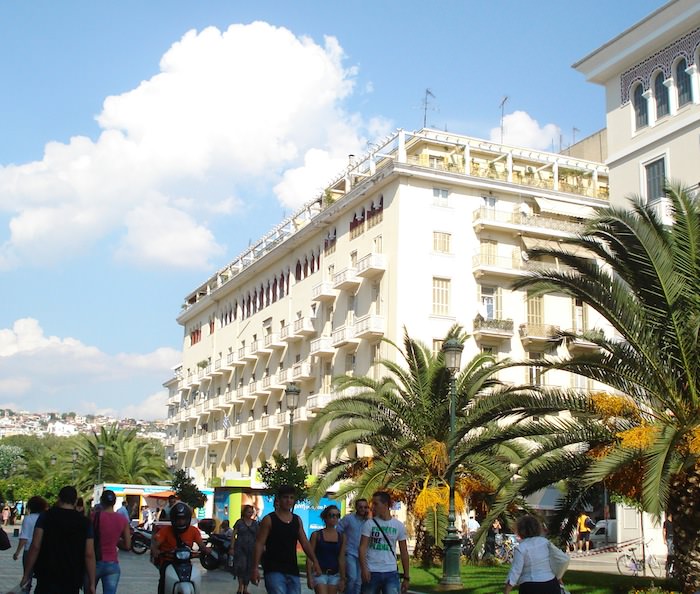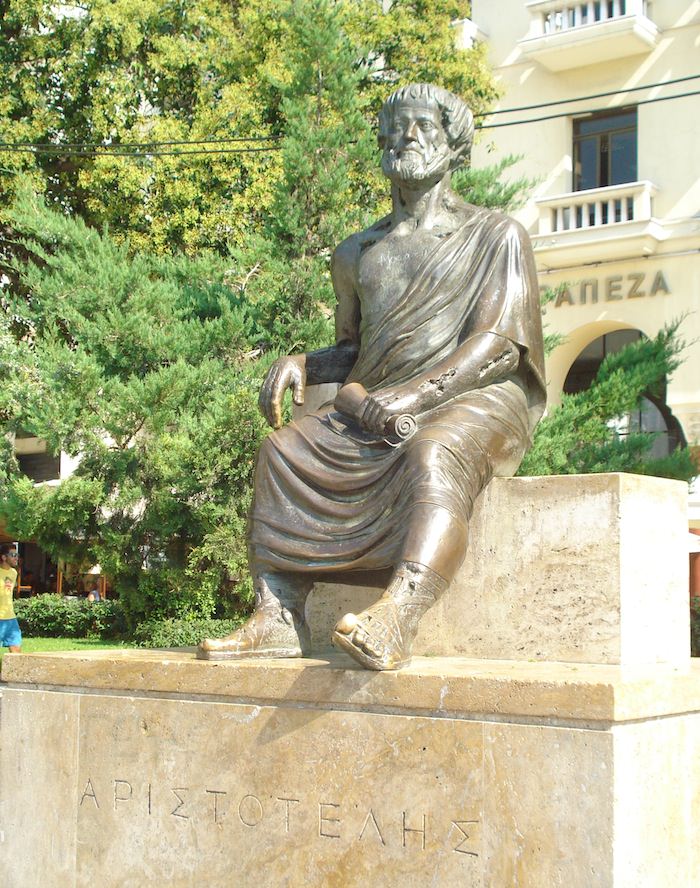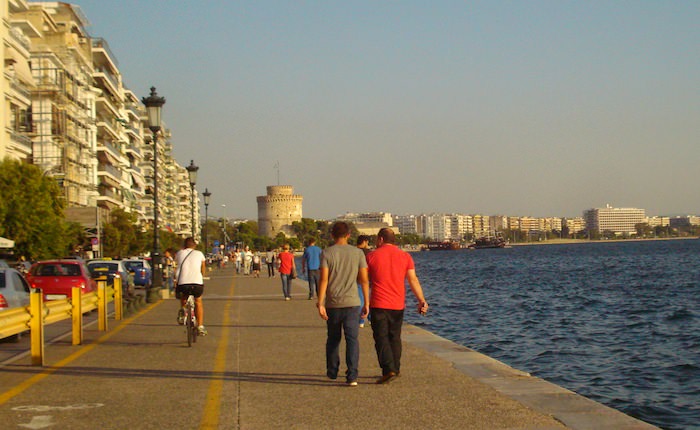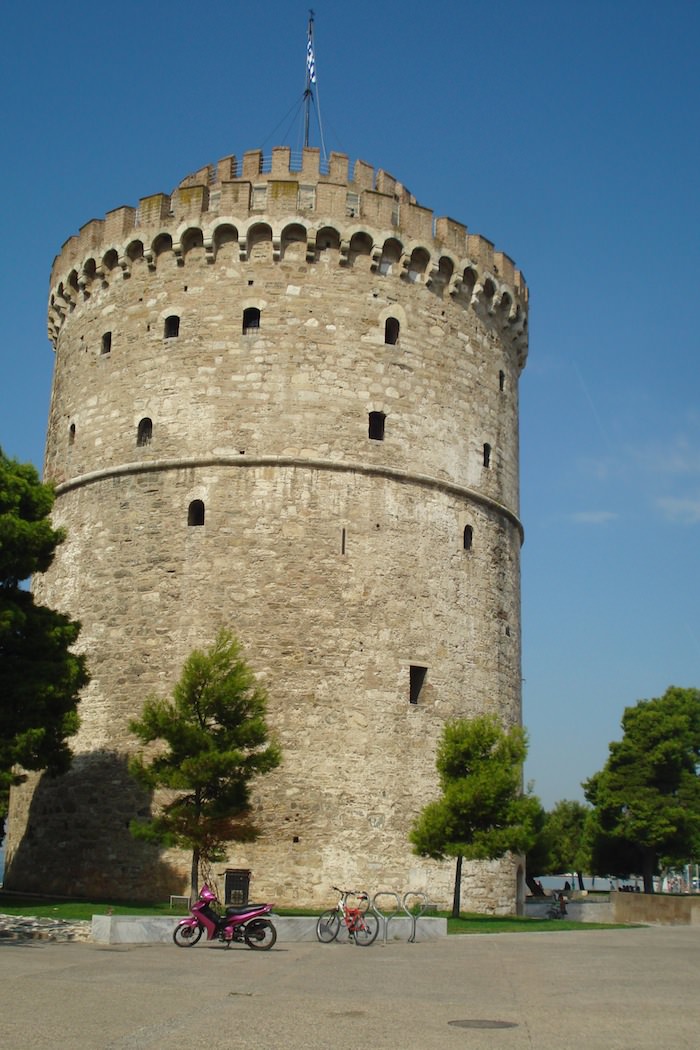Once known as the ‘Paris of the North’, Thessaloniki (Salonika) definitely has a different ambience than Athens. Maybe it’s the city’s close proximity to the sea and the elegant Parisian-style buildings. Or perhaps it’s the vibrant ‘youthful’ feel because of the young people who stroll the plateias and crowd the sea-side tavernas. Thessalonki is, after all, a university city so a large portion of the population is young students.
Originally the ancient Greek settlement of Thermae, Thessaloniki was founded in 315 BC by Kassandros, the despot who brought down Alexander the Great’s dynasty, and who also named it after the half-sister of Alexander, Thessaloniki. Kassandros had coerced her into marrying him thus allowing him a foot in the door of the Macedonian royalty.
In 146 BC the Romans arrived and took over the city. It was at this time that that the Apostle Paul visited and Christianity had its beginnings in Thessaloniki. He founded a church there in 56 AD and wrote two Epistles to the Thessalians. The Emperor Galerius took control three centuries later. The first Christian Emperor was Theodosius (379-95) who ended paganism. When the Emperor Justinian ruled (527-65), Thessaloniki became the second most important city of Byzantium after Constantinopole.
The Ottoman Turks invaded Greece in 1430 and they called the city ‘Selanik’. Thessaloniki then became one of their major cities. The population was composed of Slavs, Albanians, Armenians and the largest Jewish community in Europe while Greek Orthodox Christians were a minority.
In 1917 a fire leveled most of the old city, destroying many buildings including the entire Jewish quarter. Later the city was rebuilt in an Art Deco style under the supervision of French architect and archaeologist Ernst Hebrard. Today it is a beautiful, modern city recently named along with Athens among 35 cities around the world that will join the Rockefeller Foundations’s 100 Resilient Cities initiative. This is a 100-million dollar scheme to create a network of urban centers that will cooperate to build “their own capacities to navigate the shocks and stresses of an increasingly complex 21st century.”
When I visit Thessaloniki I usually stay at the Atlantis Hotel on the main street, Egnatia, close to the bus and train stations, making it an easy walk to see all the sights. Just a few blocks from my hotel is the pleasant plateia of Aristotele with its palms and gardens and a statue of the famous philosopher as a focal point. It’s crowded with locals enjoying frappes or wine at the kafeneions or shoppers resting on the benches under the trees.
The plateia opens to the sea walk with its beautiful neo-classical buildings and many restaurants and tavernas populated by groups of youths, many of them students from the University of Aristotle.
The sea walk is one of my favorite parts of Thessaloniki. I love the long stroll. After stopping for a delicious lunch of calamaria in pesto sauce, among the company of a bevy of handsome young Macedonians, I set off for a walk, heading toward the White Tower and another of my favorite sites in the city: a statue of Alexander the Great.
The old and new sections of the city are marked by the exhibition grounds and the seaside walk which is dominated by the famous White Tower (Lefkos Pyrgos). This was part of the Fortress of Kalamaria that once formed the corner of the city’s Byzantine and Ottoman defences. The walls were demolished in the late 19th century. Before that it was known as the Bloody Tower, an infamous place of imprisonment and execution. It is said that a Jewish prisoner was offered his freedom if he painted the tower white, hence the name “White Tower”.
Just past the Tower I come upon the magnificent statue of Alexander astride his famous horse Bucephalus, which faces east toward the young Macedonian king’s conquests. It is surrounded by a wall with a frieze depicting his battle with the Persians, a row of tall sarissas, the spears used by the phalanx troops, and a stand of shields each with the inscription of the tribe or battalion of the soldiers. The spirit of Alexander is very evident in Thessaloniki, although the city was not established until well after his death in 323 BC. In a park nearby, I find a statue of Philip II, the father of Alexander. Across from this is a theatre displaying a sign promoting a new production: “Alexander, the Musical.”
Just around the corner is the Archaeological Museum and although the treasures from the tombs have been removed to their original site at Vergina, there are still many fascinating artifacts on display. On my very first trip to the city back in 1979, they had just put the finds of the royal tombs of Vergina on display. What a thrill that was, to be one of the first to observe them! Since then the finds have been returned to the tombs and I have also viewed them there, a much more impressive sight than just seeing them in the museum cases. There are still a few Alexander-themed finds in the museum as well as other interesting artifacts.
My time in the city was limited so I decided to spend a day exploring the parts of Thessaloniki that I had not seen before. The Byzantine and Ottoman periods of Greece are often overlooked in favour of the more ancient times, but these eras are just as important, if not more, in shaping the country’s history.
My time in the city was limited so I decided to spend a day exploring the parts of Thessaloniki that I had not seen before. The Byzantine and Ottoman periods of Greece are often overlooked in favour of the more ancient times, but these eras are just as important, if not more, in shaping the country’s history.
Atlantis Hotel
14 Egnatia Street,
Thessaloniki
The modern decorated rooms at the Hotel Atlantis come with air conditioning, TV and a fridge. Free WIFI access is available.
Written by and photos by W. Ruth Kozak for EuropeUpClose.com






March 2015 BCATW Buzz
Monday 2nd of March 2015
[…] recently had an article about Thessalonika, Greece published in EuropeUpClose She’s been really busy lately doing book promo and readings of her novel SHADOW OF THE LION: […]